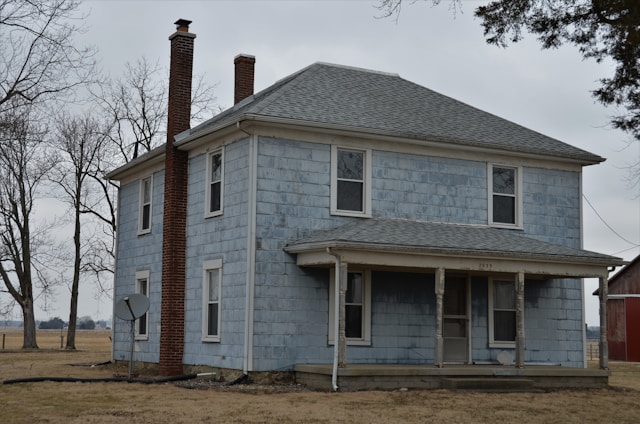Navigating Residential and Commercial Restoration: What You Need to Know
When navigating residential and commercial restoration, it’s important to understand the distinct approaches each setting requires. Residential restoration focuses on safety, comfort, and personalized service, often involving smaller project scopes and more straightforward insurance interactions. In contrast, commercial property restoration involves larger projects, regulatory compliance, industrial-grade equipment, and broader scopes, including structural and exterior repairs.
To manage these projects effectively, one must assess damage thoroughly, develop a detailed work plan, and adhere to safety standards. Understanding how timelines, third-party collaboration, and preventative strategies differ between these environments is essential for making informed decisions during recovery.

Differences Between Residential and Commercial Restoration
Disasters affect all types of property, but the impact and restoration approach vary significantly between residential and commercial sites.
Residential restoration is typically centered on making homes livable again. It often involves only a few rooms, requires direct communication with homeowners, and addresses personal possessions. Restoration professionals must consider the presence of children, pets, and daily routines when planning repairs.
By contrast, commercial restoration involves larger, often multi-unit buildings like office parks, warehouses, or retail spaces. These projects require meeting building codes, coordinating with multiple stakeholders (such as building managers or business owners), and managing logistics like parking, employee access, or business continuity. Downtime affects operations and revenue, making speed and efficiency essential in these settings.
Assessing Damage and Creating a Work Plan
The first step in either restoration scenario is assessing the damage. This step is crucial for identifying safety hazards, estimating costs, and outlining the full scope of work.
Here’s a typical process:
- Initial Inspection – Teams inspect the property for visible damage, documenting issues like water intrusion, structural compromise, or smoke staining.
- Detailed Assessment – Structural elements, HVAC systems, and interior finishes are reviewed for hidden or secondary damage.
- Scope Development – A formal plan outlines necessary repairs, material requirements, and expected timelines.
- Classification and Planning – Damage is categorized (e.g., minor, moderate, major), helping prioritize tasks and allocate resources accordingly.
This structured approach ensures nothing is overlooked and lays the foundation for a successful recovery.
Equipment and Techniques Used in Restoration
Tools and techniques vary widely depending on whether a project is residential or commercial.
Residential sites typically use portable, compact tools like:
- Dehumidifiers and air movers
- Infrared cameras to detect moisture
- Hygrometers and moisture meters for monitoring
These allow technicians to work quickly in confined spaces without disturbing daily life.
Commercial restorations, on the other hand, demand heavy-duty equipment, including:
- Negative air machines with HEPA filters
- Industrial air scrubbers
- Dump containers for large debris removal
- Truck-mounted extraction systems
These tools support the scale and speed needed for large buildings while meeting air quality and sanitation requirements.
Health and Safety Regulations in Restoration Work
Restoration always carries risks—exposure to mold, asbestos, structural collapse, or contaminated water. Whether in a home or business, compliance with safety regulations is critical.
Key practices include:
- Hazard Assessments – Identify risks like unstable ceilings, chemical exposure, or electrical hazards.
- Personal Protective Equipment (PPE) – Workers wear gloves, respirators, goggles, and coveralls to reduce exposure.
- Site Safety Surveys – Engineers or trained professionals may need to inspect structural integrity before work begins.
- Certified Training – Teams must be trained in OSHA safety standards and hazardous materials handling.
These measures ensure restoration is not only effective, but safe for workers and property occupants.
Timeframes and Project Management Considerations
Time management is another area where residential and commercial restoration diverge.
Residential projects typically proceed quickly. Most homes are assessed and scheduled within a week of the damage, with repairs completed within weeks or a few months. The timeline depends on factors like insurance approval, material availability, and whether the home is occupied during the work.
Commercial projects, however, are often multi-phase operations that span months. Planning may include engineering consultations, permitting, and bid reviews. Pre-construction phases alone can take 18–36 weeks in large commercial jobs. Managing these timelines requires dedicated project managers who can balance regulatory demands with client expectations and logistical challenges.
Working with Third Parties and Contractors
Working with third parties—like adjusters, subcontractors, or consultants—is a common part of the restoration process.
In residential settings, homeowners often work closely with the contractor, asking questions and approving work. Contractors are typically vetted through insurance programs or platforms that provide credentialed professionals.
In commercial settings, interactions are more layered. Property managers, investors, insurance representatives, and tenants may all play a role. These projects often require:
- Contracting with multiple specialists (e.g., roofing, electrical, structural)
- Coordinating safety inspections or environmental testing
- Ensuring business continuity for tenants or customers
Being able to manage communication across these parties is essential for avoiding delays and scope conflicts.
Post-Restoration Evaluation and Testing
Once restoration is complete, a thorough evaluation confirms that the property is safe and usable.
This process includes:
- Walkthroughs – Visual inspections for signs of incomplete work or remaining damage.
- Air Quality Testing – Especially after fire, mold, or sewage remediation.
- Moisture Verification – To ensure drying was thorough and mold won’t reappear.
- Punch Lists – Final touch-ups and adjustments before handoff.
In commercial projects, this phase may also include obtaining re-occupancy permits or insurance documentation confirming repairs meet claim conditions.
Preparing for Future Risks and Preventative Measures
Restoration should be more than just repair—it’s also an opportunity to build resilience against future events.
To help protect your property:
- Schedule Routine Inspections – Periodically assess roofing, plumbing, and electrical systems.
- Update Safety Infrastructure – Install or replace smoke detectors, water shut-off sensors, and backup power systems.
- Train Staff or Residents – Share emergency plans, evacuation routes, and utility shut-off locations.
- Create a Response Plan – Maintain a list of emergency contacts, backup suppliers, and trusted restoration providers.
Taking these steps after a restoration project helps reduce the risk of future damage and makes responding to emergencies faster and more efficient.
